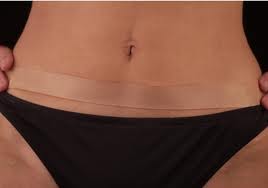Call Today ![]() 770.794.6643
770.794.6643
How to Reduce Scarring after Plastic Surgery

Whether you are undergoing breast augmentation, facelift, or tummy tuck surgery, there is no doubt that you are concerned about the appearance of post-surgical scarring. Dr. Marcus Crawford employs advanced surgical techniques, which greatly reduce the appearance of scars. During your plastic surgery consultation, Dr. Crawford will indicate where the surgical incisions will be made, and estimate the required length of the incisions. For every patient, Dr. Crawford will keep the incision location and size as discreet as possible so any resulting scarring blends nicely with the surrounding skin tone. The patient response during the recovery process will also play a role in the way that the incision heals. Here, Dr. Crawford offers recovery tips to help patients minimize the appearance of plastic surgery scars.
Limit Activity
Although many of our plastic surgery patients feel good enough to resume some of their normal activities in the day or two after surgery, it is imperative that patients avoid any activity that could cause the incision to split open. This includes strenuous exercise, high-pressure showers, and even bending down to pick up your children. It is best not to put any stress on the incision site to accelerate healing.
Keep the Incision Site Free of Infection
Patients face an increased risk of infection any time the skin is wounded, whether it is from a small paper cut or surgical incision. That is why it is so important to keep the area properly cleaned and bandaged. After your incision has been closed, Dr. Crawford will clean the incision site and apply bandages. During the next few days, the patient may be advised to clean the incision and change the bandages. Dr. Crawford will provide you with complete aftercare instructions. But generally, patients should wash their hands, and then gently clean the area with antibacterial soap. Dr. Crawford does not recommend the use of alcohol, hydrogen peroxide, or any other products at this stage, as they may aggravate the wound. Once the incision has been cleaned, pat it dry with a soft, clean towel, and apply fresh gauze with medical tape.
Scar Reduction Treatment at Home
Once the incision has closed, you may start your at home scar reduction routine. Be sure to talk to Dr. Crawford during your first follow-up appointment to find out how soon you can start applying scar reduction products to the incision. Scar reduction treatments include the use of ointments, creams, or silicone sheets to minimize the appearance of post-surgical scarring. For best results, start your scar reduction routine about two weeks after surgery, and continue for the next year.
Limit Sun Exposure
Sun exposure can make scarring more visible. Apply sunscreen to your scars on a daily basis, even if they are not on areas directly exposed to the sun. The sun's powerful rays can penetrate light clothing and windows, so it is important to make sunscreen part of your regular scar reduction routine.
Professional Scar Reduction Treatment
About one year after surgery, the incisions should be completely healed, resulting in the final post-surgical scarring. Though most plastic surgery scars are difficult to detect, some patients undergo professional scar reduction treatments such as microdermabrasion to lighten their appearance, or dermal fillers to add volume to scar depressions.
To schedule your consultation with Dr. Crawford, contact Crawford Plastic Surgery today.



Add new comment